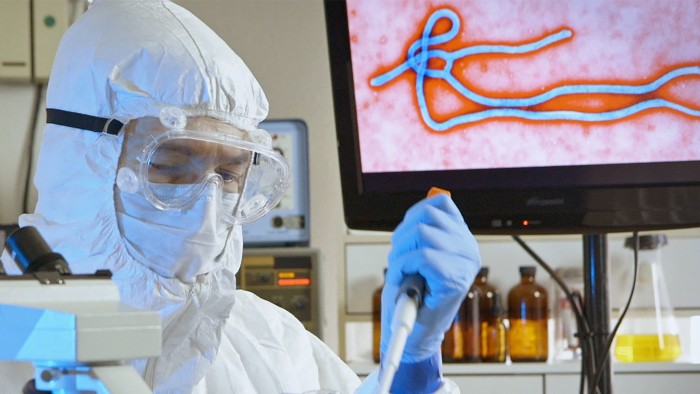Experimental Ebola vaccines need testing

Roula Khalaf, Editor of the FT, selects her favourite stories in this weekly newsletter.
The Ebola crisis in west Africa may be over, but some developers have been left with a half-completed legacy: they have experimental vaccines produced and waiting to be definitively tested at a time when global attention and funding is turning elsewhere.
GlaxoSmithKline has already produced several hundreds of thousands of vials of its vaccine ready to deploy; Johnson & Johnson has sufficient doses of its version in storage for 2m people. But neither vaccine has yet been tested for efficacy, and still insecure is the financial support needed to complete that process — and manufacture at scale.
“Fortunately for the world, the epidemic came under control and the incidence dropped,” says Johan Van Hoof, head of infectious diseases and vaccines at Janssen, the pharma arm of Johnson & Johnson. “Unfortunately for our project, that meant we could not start efficacy studies because the incidence was not high enough.”
The good news for the effort to eradicate Ebola was the remarkable speed with which experimental vaccines were developed after the 2014 outbreak of the disease, which had been present in Africa for decades. That was partly the result of substantial funding in previous years from the US and Canadian governments, as part of broader efforts to protect their citizens from bioterror.
A DNA platform on which to structure the vaccine was also already in place to accelerate the process, and three experimental products were advancing rapidly as the epidemic began to wane last year.
More international assistance was available than during previous outbreaks of infectious disease. The EU’s Innovative Medicines Initiative provided support. The World Health Organisation stepped up co-ordination, and European and US regulators — partly prepared by the threat of pandemic flu in the 2000s — moved quickly to authorise tests in difficult conditions.
At the same time, companies were willing to experiment with new partnerships and to invest considerable sums despite the absence of any clear long-term commercial model to sustain and reward their work. Emmanuel Hanon, head of research and development at GSK Vaccines, says that government funding helped advance research. “Because we thought we had a candidate vaccine, we had to respond,” he says. “But these are not necessarily vaccines with a commercial driver. There is potentially less incentive for big industry to invest.”
With the exception of a recent vaccine for meningitis in Africa, few products have been developed in the absence of a market in richer countries. From polio, which began with research in the US, to dengue fever, for which there is growing demand in middle-income countries, there has usually been a clear economic incentive for companies.
The immediate challenge for developers is that it is currently impossible to test whether the new vaccines work at scale. That would require a fresh epidemic, with significant numbers of people at risk. For now, they and others are preparing for additional mid-stage trials to show a strong immune response.
Mr Van Hoof says Janssen is preparing for testing that is targeted at more vulnerable and less examined groups at risk, including children and those with HIV. “But the real proof of efficacy depends on an outbreak,” he says.
Another such outbreak is not impossible, says Anthony Fauci, director of the US National Institute of Allergy and Infectious Diseases. “Generally there may be waning interest, but Ebola is not off my radar screen,” he says. “I still feel it is a considerable threat. People get worried about things after they have happened, but you should be preparing before they happen.”
Yet Dr Fauci concedes that wider public and political attention is shifting from Ebola towards Zika in response to the latest crisis. The US government is trying to move Ebola money to give it to the new disease. “Congress doesn’t want to grant extra funds. But we want to spend Ebola money on Ebola.”
Mr Hanon says that he has not noticed momentum on Ebola research dropping significantly. “We are in constant interaction with regulators. We’ve been exposed to the epidemic, and everyone knows it can come back.”
But he says that for a full-fledged response to Ebola in the future, and to prepare for other outbreaks, a new mechanism involving multiple funders and supporters will be required. “We would not self-fund, we would seek contributions.”
Mr Van Hoof agrees. “There’s a willingness to have a discussion, but there is not full clarity yet. There’s a risk. The extreme sense of urgency that was there in the beginning, in 2014, is no longer there.”
Comments